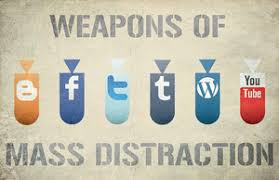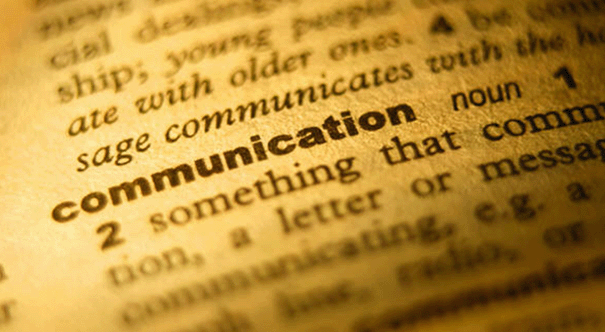A phone that never seems to stop ringing, colleagues that just want to chat, last-minute/disorganised meetings, countless daily emails, or demanding children (if we work from home). We all experience and juggle distractions in the workplace on a daily basis. These distractions “have the ability to draw us in, take us off track and cause us to lose hours of our time, as they affect our ability to concentrate, and get the job done!” says Organisation and Management Consultant, Louise D’Allura.
Distraction management is definitely an area I can improve on. So I sought advice from some experts in the field, as well as those with experience and success in managing the distractions in their workplace.
This is what we came up with – here are our 10 top tips for managing distractions in your workplace (short of going AWOL!):
1. Establish what your role is and what you want to achieve
2. Plan your time
3. Manage meetings and avoid being “the go-to problem-solver”
4. Manage distractions from work colleagues and employees
5. Work from a different location
6. Tips for working from home
7. Disconnect from Social Media
8. Disconnect from email
9. “If I don’t do this task now, I’ll forget about it”
10. Take a break
1. Establish what your role is and what you want to achieve
The first step to managing distractions is to consider what you want to accomplish, or basically, what you are being paid to do, advises Louise D’Allura. “Before you even look at how to manage distractions the key is to understand what it is you’re paid to do. What are your KPI’s (key performance indicators)?” Asking this simple question will help you focus and prioritise the tasks at hand. “If you know how you will be judged you will be able to ensure you’re asking yourself ‘am I doing the tasks that represent the highest value to my organisation?’ Knowing this helps you to work out if your job is to solve other people’s problems then you need to have strategies in place to help you get your work done, AND meet the requirements of your role,” advises Louise. After defining what it is you need to achieve, the next step is identifying the things (or distractions) that prevent you from doing this. “Without awareness you can’t change what you don’t know. So do an audit, get feedback from trusted colleagues and friends,” says Louise.

Louise recommends considering the below questions to “work out what is working and what’s not”:
• Do you always offer to help when it isn’t asked?
• Do you attend too many meetings?
• Do you know what To Dos you have to do and how long they will take?
• Do you know how you’re performing?
2. Plan your time
It sounds obvious, but the more you plan what you’re going to do, the better you’ll manage distractions. Business Coach, Maureen Pound suggests two ways that you can make better use of your time:
1. “Block your activities in chunks rather than trying to multitask and getting distracted switching from one thing to another.”
2. “Plan what you are going to focus on for the day and the week. The clearer you are about what is important to get done, the less likely you are to be distracted.”
3. Manage meetings and avoid being “the go-to problem-solver”
There are always a couple of people in every organisation who are looked to in times of crisis for their problem-solving abilities. “If you’re the one everyone relies on when there is a crisis – but you’re still working late getting around to your work at the end of the day, the question is how do you still contribute to your workplace without getting drawn into everything? If this sounds familiar it won’t surprise you to know that a lot of people who struggle with this, hate to let others down by saying no – even if it leads to them being overwhelmed by work/commitments and no time for family,” says Louise.
The solution? Louise advises to “Work out who are the people that can interrupt you vs those you can ask to get back to when it suits YOU. Always ask how long will it take (and assume they are terrible estimators!); work on your standard lines so you don’t get drawn into conversations!”
In regards to meetings, the trick is to work out if you really need to attend before-hand. Ask questions such as: “if the meetings have clear outcomes and agendas? Are the essential people that need to be there, there? or is it every man and his dog?…ask these questions, and get out of attending if you can,” advises Louise.

4. Manage distractions from work colleagues and employees
We all have certain times of the day when we work best and it’s important that others we work with understand this (and vice versa!). “Manage distractions and interruptions. Research shows it takes most people 10 minutes to return to focused work after they have been interrupted,” says Joshua Uebergang from Online Visions. We need to be proactive and part of the solution in managing the distractions around us – quite often it’s all about training.
“Communicate with those who distract you. Say when you can be approached, explaining your reason to help them understand it’s not personal. It helps to designate a time-period for your most important tasks where you “train” people to never interrupt,” advises Joshua.

Maureen Pound believes that a consistent approach is the most successful: “Tell people you don’t want to be disturbed during certain times. Try to keep them the same each week, so people know not to interrupt during those times.”An “open plan working environment can be fun when co-workers have a healthy balanced relationship,” says Anna, blogger at www.annablogia.wordpress.com.
“However even in a fun office it can be difficult to survive when everyone is in the same room. Personally, as a writer I struggle with noise. However it has been a year now of me trying to get used to this open plan office design and I must say I am getting better”. Anna’s tips for surviving in a noisy, open-plan office are:
1. Exercise your selective hearing – the more you try to isolate your mind from the noise the better it will become eventually.
2. If you cannot tune into the work mode while everyone else is talking around you, get head phones. This is what I do as well. Head phones plugged into my phone or working computer with the type of music which helps me concentrate.
3. Ask others to shut up! Always an option but might appear to be a little rude.
4. Demand to have a personal office. Might also result in a negative outcome.
5. Pay attention to when your co-workers are louder and plan your writing work (or whatever cannot be done in the noisy environment) around it.

Failing this, you could always try working off-site…
5. Work from a different location
There is such a thing as being too accessible. If you work in an office with other colleagues or employees, they will come to you with (often well-intentioned) questions. You’re there and it’s easier for them to quickly ask you a question, rather than trying to work something out for themselves. Even if it’s a quick question, lots of them can be exceptionally distracting.
Amanda Tallent, CEO Bennetts Boots wide calf boots identifies with this situation; “We have shops and a main office but my husband (business partner) and I decided to work from home. In part to get the space to get our work done, when we are at the head office we are bombarded with questions and can’t help get distracted, resulting on us working in the business instead of ON the business”. Amanda raises a good point in that your job as business owner/director is to work ON your business. You need to schedule time to do this, so being inaccessible by working away from the office, or letting your team know when you can’t be disturbed is a good start.
Sometimes working from home is not always the best solution, as Amanda says that their three-year-old daughter can also be a distraction, “As wonderful as it is to both be close to her as she’s growing up, the reality of trying to do a phone training session while she’s asking the same question over and over even though you have answered it, or deciding to sing at the top of her voice just as you pick up the phone…is proving to be more challenging than we had first thought”.
Pick your locations – sometimes a table in the corner of your local coffee shop is as good as anywhere!

6. Tips for working from home
• Limit your housework tasks and use them to your advantage
The challenge of working from home, rather than from an office each day is that you can’t escape the mess that surrounds you – dirty dishes, washing, clothes that are begging to be folded, etc. It’s also amazing how much housework gets done when you have a deadline or need to get something completed. Housework is a great procrastination tool, but you can use it to your advantage, says Darryl van Rooy. “Each hour – do some small and quick home duties – clean the toilet. Again, it’s a time signal and a break for your brain. Also if you have a crappy day at work and feel like you have achieved nothing, at least you can say the toilet is clean – you have achieved something.”
• Remove the distraction
Writers have an established reputation for being the masters of procrastination, but writer Helen Collier is on a mission to quash this preconception. “As a writer I sometimes just need to crack on and get the article finished. Working from home has its benefits, but when I first started working for myself I found that I was so busy with my non-work related distractions, that half a day could go by and no work has been achieved. I’m also a puppy owner and he has other ideas about what we should spend our time doing and comes and regularly nudges my elbow and looks at me longingly.” Helen’s advice is simple: “remove these distractions – out of sight out of mind. Puppy goes outside with a bone, and mobile and email are switched off. If I don’t know about it, I can’t get distracted by it. And the cooking and washing, well…there’s plenty of time for all that once my article is done and dusted”.
7. Disconnect from Social Media
“Facebook, Google+, Twitter, Pintrest, Tumblr – OFF. Have a play at lunchtime when you’re munching your sandwich,” says Darryl van Rooy, owner of Sunbury Carpet Cleaning.

8. Disconnect from email
• Limit how frequently you check your email
How long could you last without checking your email? In some businesses, email is more critical than others, but most businesses could probably get away with checking emails a couple of times a day, rather than every five minutes.
Darryl advises, “Don’t fire up your email program until you need to send an email. This will mean the emails that people have sent to you won’t be actioned straight away. You will answer them – if you take some time to respond, it gives the impression that you are busy. Other business people don’t really like dealing with people that have nothing to do – it gives the impression that you are a poor business performer.”
• Turn off email alerts
The “bing” alert noise that most smart phones produce when we receive an email these days fuel our desire to procrastinate on what’s important – TURN THEM OFF! Maureen Pound agrees, “Turn of any sort of beeps to signal arrival of new emails or messages. Checking them will only distract you and get you off-task”. The same also applies to your phone, says Maureen: “Turn off your phone if you would not like to be disturbed. Surely people can wait an hour or two for you to get back to them”.

9. “If I don’t do this task now, I’ll forget about it”
GUILTY! Often the small, simple jobs that we think will “only take a minute” take longer than we expect, and cause us to lose focus and forget about what we were originally working on. “Have your diary open and if something flashes into your head, write it down on the day it needs to be done,” advises Darryl.
10. Take a break
Darryl van Rooy has run his own business, Sunbury Carpet Cleaning for five years now. Whilst it might sound strange to stop working, Darryl believes that having morning and afternoon tea breaks are essential, especially for home based businesses, as they “give your brain a chance to relax and you also tell yourself that half the morning/afternoon is gone – that might make you work faster or pat yourself on the back for getting a lot done”.
Thanks to our contributors for their wise words:
Amanda Tallent, Bennetts Boots: Bennetts Boots specialise in high-quality leather boots for wide calves, whilst keeping fit, function and fashion first-of-mind. www.bennettsboots.com
Darryl van Rooy, Sunbury Carpet Cleaning: Darryl’s business specialises in carpet and mattress sanitizing services in Sunbury, Macedon Ranges and Northwestern Suburbs of Melbourne. www.sunburycarpetcleaning.com.au
Joshua Uebergang, Online Visions: Online Visions is a specialist ecommerce design, development, and marketing company based in Brisbane. www.onlinevisions.com.au
Helen Collier, Just Words – Helen is a freelance writer and PR pundit. She hopes her clients never realise how much she’s juggling at one time! www.justwords.com.au
Maureen Pound, Business Coach – Maureen Pound is the business coach for the brave. Are you a capable person who is procrastinating at the moment? Contact Maureen for a complimentary procrastination buster session at maureen@maureenpound.com.
www.maureenpound.com
Louise D’Allura, The Revamp Experience – Louise is an Organisation/Time Management Consultant and Mentor for The Revamp Experience. Since 2009 The Revamp Experience has been helping individuals and organisations increase their energy, decrease their stress and regain control of their time, workspace and well-being. www.therevampexperience.com.au
Anna, blogger at www.annablogia.wordpress.com
Anna is a blogger with a keen interest in fitness and business. Blogging for a living (and for fun) Anna loves researching and writing about these areas, as well as a variety of other topics.

































